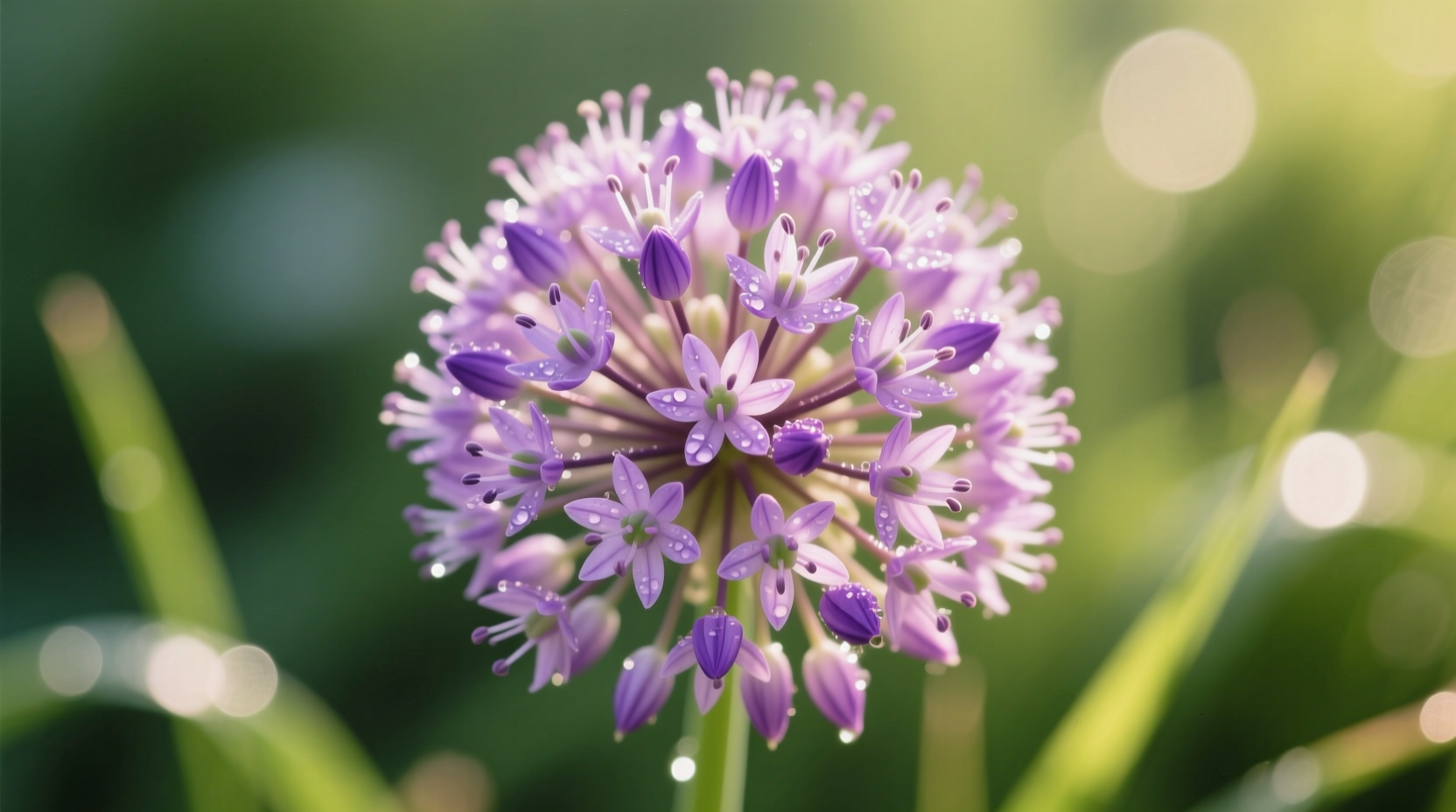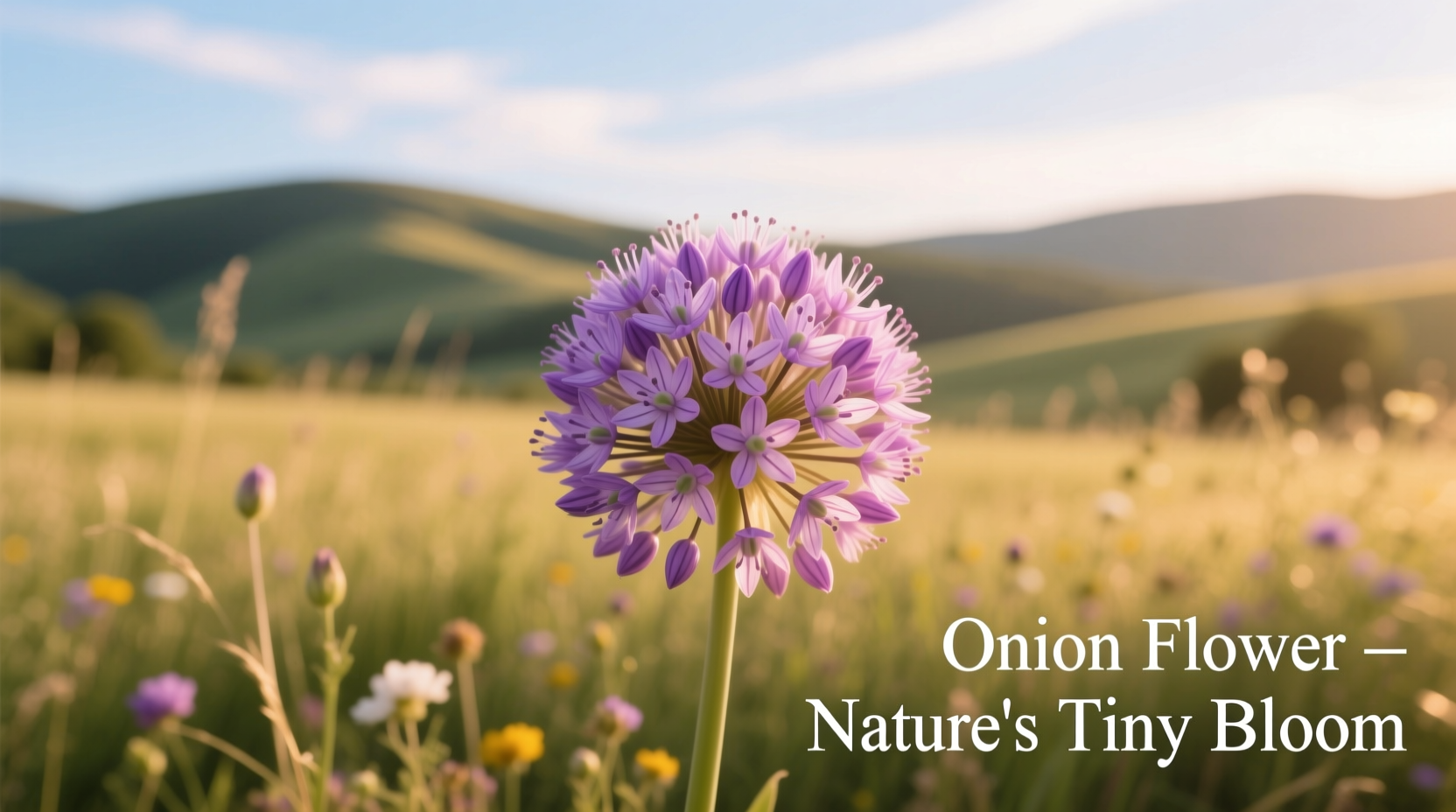What Exactly Are Onion Flowers?
When your onion plants send up tall stalks topped with round flower clusters, you're witnessing the natural bolting process. These distinctive blooms belong to the Allium genus, which includes onions, garlic, leeks, and chives. Unlike the underground bulbs we harvest, onion flowers develop above ground as the plant's reproductive mechanism.
Botanically classified as umbels, these flower heads consist of dozens of tiny star-shaped florets arranged in perfect spherical formations. While common onions (Allium cepa) produce the most familiar varieties, many ornamental allium species feature dramatically larger blooms that gardeners cultivate specifically for their striking visual appeal.

Why Do Onions Flower: The Science Behind Bolting
Onion flowering typically occurs when plants experience environmental stressors that trigger their reproductive cycle. Key factors include:
- Temperature fluctuations - Sudden cold snaps followed by warm periods
- Day length changes - Onions are sensitive to photoperiod (most varieties bolt when days reach 14+ hours)
- Maturity signals - Plants naturally progress to flowering after establishing strong root systems
- Water stress - Both drought and overwatering can induce premature bolting
When onions flower, energy redirects from bulb development to seed production. This explains why flowering onions often yield smaller, less dense bulbs. Commercial growers consider bolting undesirable for bulb crops but welcome it in seed production fields.
Common Onion Flower Varieties Compared
| Allium Type | Flower Appearance | Edible Parts | Best Culinary Use |
|---|---|---|---|
| Common Onion (A. cepa) | White/pink umbels (2-3" diameter) | Flowers, scapes, immature bulbs | Salads, pesto, vinegar infusions |
| Chives (A. schoenoprasum) | Vibrant purple pom-poms | Flowers only | Garnishes, compound butters |
| Garlic (A. sativum) | White/green star clusters | Scapes, immature flowers | Stir-fries, roasting, pickling |
| Ornamental Allium | Purple spheres (up to 10" wide) | Generally not recommended | Decorative only |
Source: University of Minnesota Extension - Allium Growing Guide
Edibility and Flavor Profile of Onion Blossoms
Yes, onion flowers are completely edible and offer a delicate flavor profile that differs from mature bulbs. The blossoms provide:
- Milder taste - About 30-50% less pungency than mature onion bulbs
- Subtle sweetness - Particularly noticeable in pink and purple varieties
- Textural contrast - Tender florets versus crunchy stems
- Visual appeal - Vibrant colors that enhance dish presentation
According to culinary research from the Royal Horticultural Society, the flavor intensity varies by variety and growing conditions. Flowers harvested in morning after dew has dried contain optimal flavor compounds. Avoid using flowers from plants treated with non-edible pesticides.
Practical Culinary Applications for Home Cooks
Maximize your onion flower harvest with these chef-tested techniques:
Salad Enhancements
Separate florets and scatter over green salads for both flavor and visual interest. The mild onion taste complements bitter greens like arugula while pairing beautifully with citrus vinaigrettes. For special occasions, float whole small umbels in chilled soups.
Infused Vinegars and Oils
Create elegant flavored vinegars by packing clean flowers into sterilized jars and covering with white wine vinegar. After 2-3 weeks, strain and use in dressings. Note: Never store flower-infused oils at room temperature due to botulism risk - refrigerate and use within 4 days.
Culinary Preservation Methods
Preserve your harvest through:
- Crystallized flowers - Dip in egg white, coat with superfine sugar, dry on racks
- Freezing in ice cubes - Place 1-2 flowers per compartment for cocktail garnishes
- Vinegar preservation - Cover with 5% acidity vinegar for refrigerator pickles
Gardening Implications: When Onions Flower
While flowering doesn't harm the plant, it does redirect energy from bulb development. If you're growing onions for bulbs:
- Remove flower stalks immediately by snapping them off at the base
- Water consistently (1-2 inches weekly) to reduce stress
- Apply nitrogen-rich fertilizer after flowering to encourage bulb recovery
- Harvest flowering onions promptly as they won't store well
Conversely, if you're growing onions specifically for their flowers (as many heirloom gardeners do), allow the blooms to develop fully. Seed pods will form after flowering, providing next year's planting stock. The Old Farmer's Almanac recommends leaving at least 3-4 plants per variety to flower for seed saving purposes.
Ornamental vs. Culinary Alliums: Key Differences
Many gardeners confuse culinary onions with ornamental allium varieties. While both belong to the same genus, important distinctions exist:
- Size matters - Ornamental varieties often feature dramatically larger flower heads (up to 10" diameter)
- Flavor intensity - Most ornamental alliums have significantly stronger, sometimes unpleasant flavors
- Cultivation purpose - Ornamentals are bred for visual impact rather than taste
- Edibility warning - Some ornamental varieties contain higher concentrations of compounds that may cause digestive upset
When in doubt about edibility, stick to flowers from plants you've grown specifically as culinary crops. Never consume flowers from plants purchased as ornamentals without verifying their edibility through botanical identification.











 浙公网安备
33010002000092号
浙公网安备
33010002000092号 浙B2-20120091-4
浙B2-20120091-4